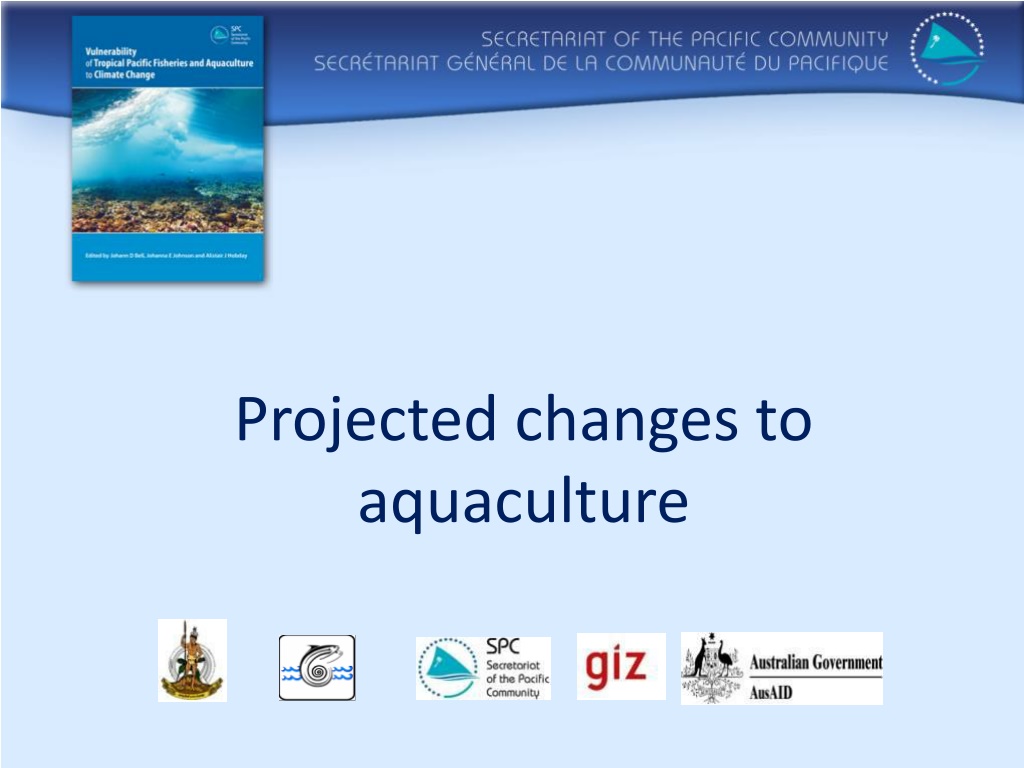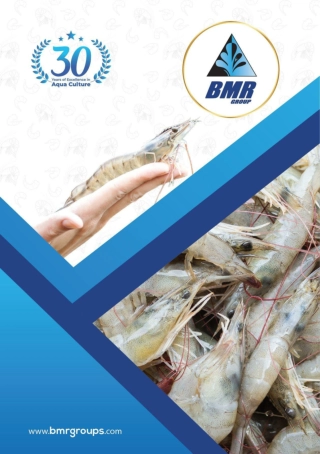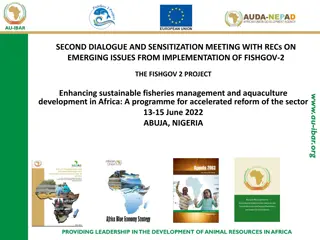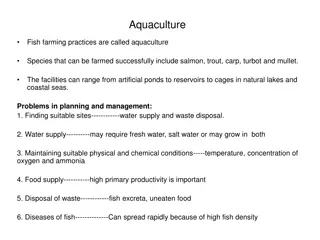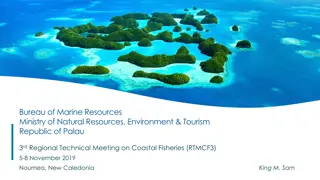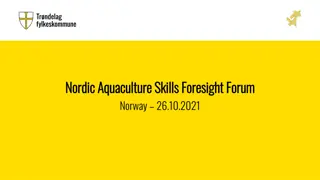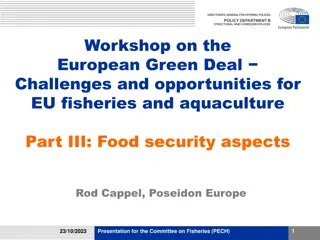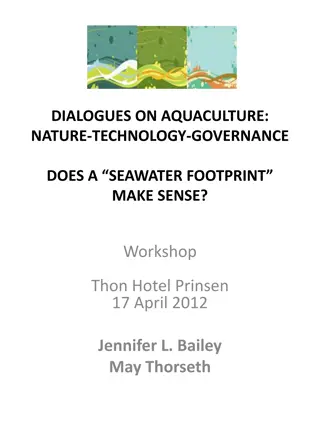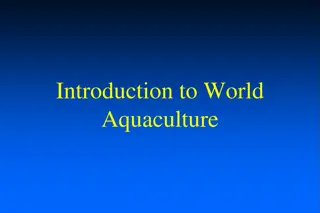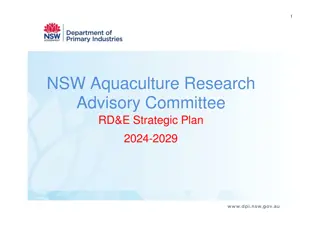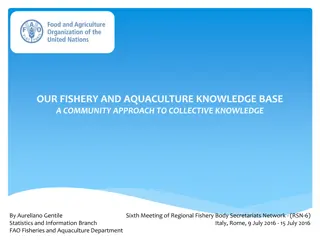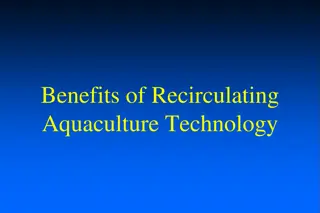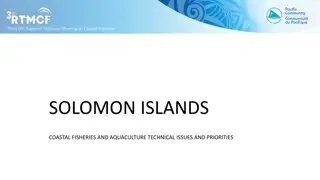Aquaculture Adapting to Climate Change: Insights and Strategies
Aquaculture faces evolving challenges due to climate change. Freshwater and coastal aquaculture, focusing on tilapia, milkfish, freshwater prawn, and marine species, are explored. The vulnerability of aquaculture is highlighted, along with potential benefits and risks posed by climate change. Strategies to mitigate risks, such as building fish ponds and increasing aeration, are suggested. Ultimately, freshwater pond aquaculture emerges as a favored industry in adapting to climate fluctuations.
Download Presentation

Please find below an Image/Link to download the presentation.
The content on the website is provided AS IS for your information and personal use only. It may not be sold, licensed, or shared on other websites without obtaining consent from the author. Download presentation by click this link. If you encounter any issues during the download, it is possible that the publisher has removed the file from their server.
E N D
Presentation Transcript
Projected changes to aquaculture
Outline Freshwater aquaculture (tilapia, milkfish, freshwater prawn) Vulnerability of freshwater aquaculture Coastal aquaculture (marine shrimp, marine ornamentals) Vulnerability of coastal aquaculture
Tilapia Food security Cage culture Household subsistence production
Tilapia Livelihoods Cage culture Semi-intensive ponds Aquaponics
Tilapia Tilapia farming is expanding in the region PNG 10-15,000 households Fiji produces 200-300 tonnes per year Vanuatu 65-70 tonnes p.a., hatchery established Samoa has 25 farms
Freshwater prawn Macrobrachium Hatchery-based culture (M. rosenbergii) Capture-based culture (M. lar) Fiji produces about 25 t per year
Tilapia, freshwater prawn Likely to benefit from climate change Higher rainfall and warmer temperatures will allow farming in more places and at higher altitudes
Tilapia, freshwater prawn Increased risks from flooding Stratification from higher temperatures causes de-oxygenation
How should we respond? Build fish ponds to avoid more severe floods Photo: Avinash Singh
How should we respond? Increase aeration to combat stratification
Conclusion Freshwater pond aquaculture is likely to be favoured by climate change Source: Pickering et al. (2011)
Ocean acidification Source: IPCC (2007), Ganachaud et al. (2011)
Temperature 2035 2050* Spatial variation in temperature increase 2035 2100 Source: Lough et al. (2011) * Based on B1 2100
Sea-level rise Projection 2035 2050 2100 IPCC 8 cm 18-38 cm 23-51 cm Semi-empirical 20-30 cm 70-110 cm 90-140 cm
Marine shrimp Expected to benefit in short term from higher temperatures In the long-term, the main threats to shrimp culture are: Sea-level rise Ocean acidification Pathogens Scarcity of fishmeal?
Marine shrimp Now: crop in progress Now: pond preparation Sea-level rise will make it difficult to: dry out ponds between crops Future: poor pond prep. harvest shrimp Future: difficult to harvest
How should we adapt Modify shrimp ponds to drain well
Giant clams and marine ornamentals 2035 2050 2100 Effects due to: Increased temperature Ocean acidification Greater runoff More-intense cyclones
How should we adapt? Grow-out animals at greater depth (cooler waters) Identify sites where CO2 is reduced
Conclusion Scope for development over next 30-40 years Production efficiency is likely to be reduced
